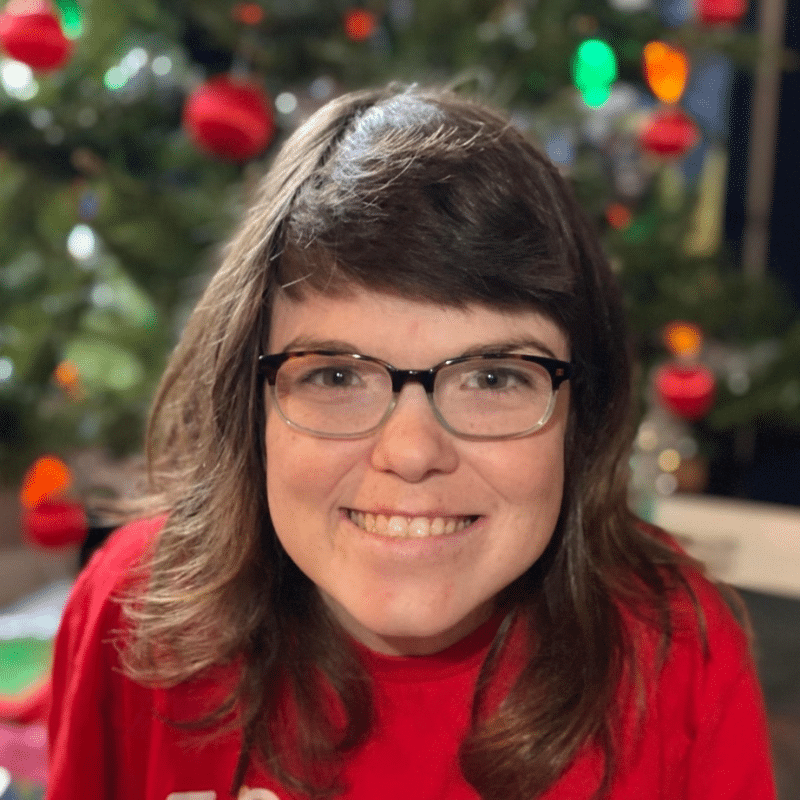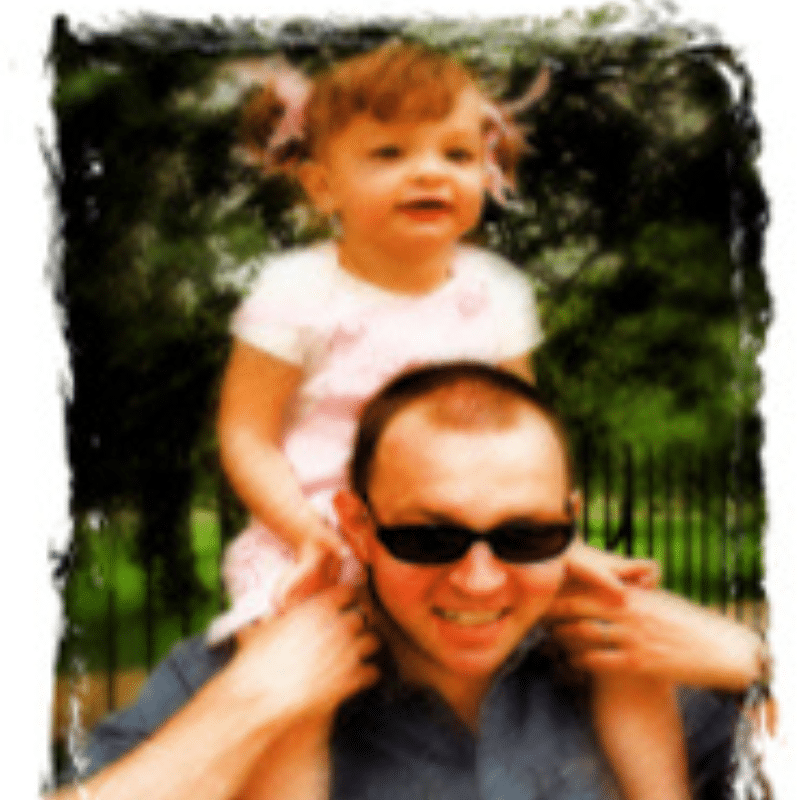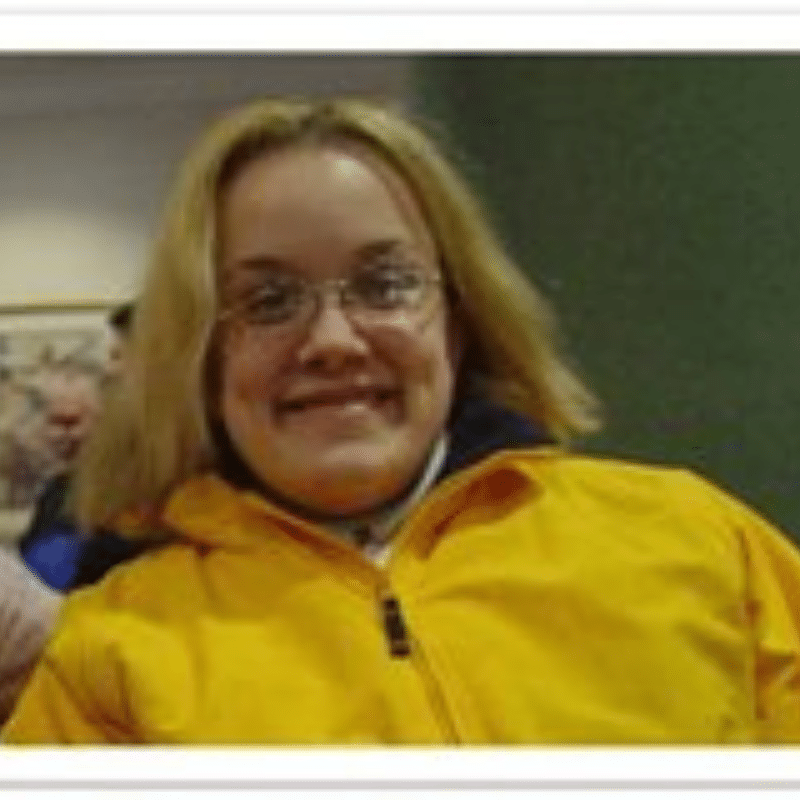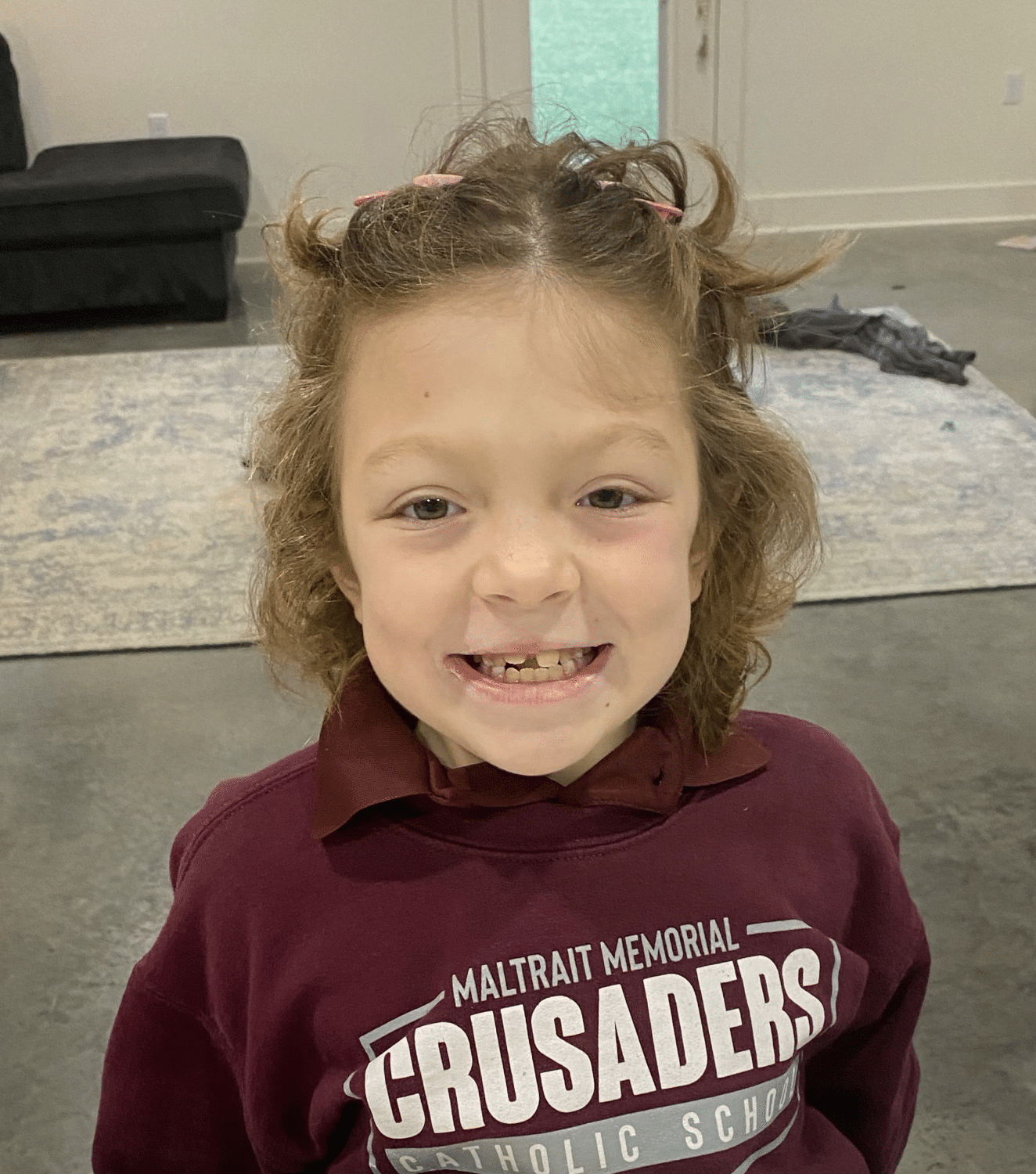Alpha-Mannosidosis
Alpha-Mannosidosis
Alpha-Mannosidosis is caused by deficient activity of the enzyme alpha-D-mannosidase. There are three clinical subtypes, which include:
- a mild form recognized after age ten years with absence of skeletal abnormalities, myopathy, and slow progression (type 1)
- a moderate form recognized before age ten years with presence of skeletal abnormalities, myopathy, and slow progression (type 2)
- a severe form manifested as prenatal loss or early death from progressive central nervous system involvement (type 3)
How Common is it?
Alpha-Mannosidosis is believed to occur in approximately 1 in 500,000 people worldwide

Signs and Symptoms:
Symptoms range widely in their onset and severity. Often the appearance of an affected individual includes the following: Intellectual disability; distinctive facial features; and skeletal abnormalities such as reduced bone density (osteopenia), thickening of the bones at the top of the skull (calvaria), deformations of the bones in the spine (vertebrae), bowed legs or knock knees, and deterioration of the bones and joints. Characteristic facial features include a large head, prominent forehead, low hairline, rounded eyebrows, large ears, flattened bridge of the nose, protruding jaw, widely spaced teeth, overgrown gums, and large tongue.
Affected individuals may also experience difficulty in coordinating movements (ataxia); muscle weakness (myopathy); delay in developing motor skills such as sitting and walking; speech impairments; increased risk of infections; enlargement of the liver and spleen (hepatosplenomegaly); a buildup of fluid in the brain (hydrocephalus); hearing loss; a clouding of the lens of the eye (cataract); and psychiatric symptoms such as depression, anxiety, or hallucinations. (The paper on psychiatric symptoms is reprinted with permission of the author and the Journal of Intellectual Disability Research.)
What are the typical symptoms of Alpha-Mannosidosis and how can they be remedied?
Alpha-Mannosidosis displays clinical heterogeneity, ranging from very serious to very mild forms. All of the following symptoms are possible, but in no way mandatory in the individual patient.
Appearance
Immune-Deficiency
Cerebral Symptoms
The disease causes a diffuse dysfunction of the brain, with a mixture of strong and weak mental performances. These delayed early landmarks of neural development may be overlooked by the surroundings for many years. Measurement of total mental performance in small children is very complex. Special cells in the little brain (cerebellum) are especially prone to dysfunction, which contribute to the observed gait.
For the mentally retarded patients, problems in learning can be reduced with special training by professional teachers, both in the kindergarten as well as in the school. Language problems can be helped by special teachers and sometimes sign language might be of help. Computers with interactive teaching programs can be beneficial. As to whether children should be integrated into normal classes or attend special classes is a matter of different opinion. To help the patients further, an active socialization and integration can take place under the supervision of parental groups in the kindergarten and neighborhood. In school, the classes could be put together in an optimal fashion to keep the patient in a safe and caring environment. The society could be helpful in organizing leisure activities or protected work to improve the quality of life.
Skeletal Problems
The skeletal malformation is especially seen in the spine of the chest which may give the patients a rigid and deformed spine and back pain. Further, a less acknowledged complication of the disease is the destruction of the joints, very much resembling the rheumatoid arthritis. The joints might be destructed which together with ataxia may immobilize the patients. This has to be taken into account when planning housing and future jobs. This might occur at older age. Building programs for wheel-chair adapted houses equipped with elevator could secure the diseased an independent life. It is not clear to which degree orthopedic surgery can help. Possibly should less radical procedures (such as temporal epiphysiodesis in the case of genu valgus) be preferred.
Hearing Problems
Impaired language:
A consequence of hearing loss and the cerebral dysfunction is a delayed ability of speech, with incomplete sentences, restricted vocabulary, and the understanding of abstracts. This handicap can be reduced with special training by a professional, both in the kindergarten as well as in the school. Sometimes sign language might be of help.
Muscular Problems
How do these symptoms develop over time?
This is one of the most crucial questions asked by relatives of those affected. The answer to this is decisive for the future planning of the families, both regarding economy and housing, and further whether “risky” treatment like BMT should be considered . There are very few and small observations on this subject so this information is uncertain. Above all, most cases reported are children, so we really do not know for sure what happens over time. Indications from recent BMT procedures show promise that, if done at a very early age, the risk vs benefit is greatly reduced.
In general, all symptoms of diseases of this kind are progressive, but some authors have suggested that these are stabilized in the second decade of life. However, there are many reports on sudden complications at any, also adult age, so that the course of the disease should be regarded as chronic-intermittent in nature. These complications might be hydrocephalus, destruction of joints, corneal clouding, atrophy of the little brain (cerebellum), ataxia and above all muscular disease with atrophy and weakness.
Treatments:
Bone marrow/ stem cell transplant: There have been a number of children who have had this treatment and their stories can be found on our website under Family Stories. ISMRD is currently funding research into the long-term effects of bone marrow transplant for Alpha-Mannosidosis.
Enzyme replacement therapy: initially pioneered by Zymenex and later advanced by Chiesi, an Italian pharmaceutical company, was approved in January 2018 by the European Medicines Agency (EMA) for use in Europe. In February 2023, it was approved for use in America by the US Food and Drug Administration (FDA).
Patient Support Groups:
- ISMRD is the international support group for Alpha-Mannosidosis
- ISMRD’s Facebook page; this is our closed group for families only
- ISMRD’s Public Facebook page for this disorder
- UK MPS Society is a support group for MPS and related diseases in the United Kingdom
- National MPS Society: Their mission is to serve those impacted by mucopolysaccharidosis (MPS) and mucolipidosis (ML).
- Other MPS groups around the world will also offer support.
More Facts & Details:
How long has the disease been known?
The existence of so-called Hurler-like diseases had been known for many years when in 1967 Oeckermann in Lund, Sweden, described a boy who represented an isolated case of an apparently new disorder. Mental retardation, susceptibility to infection, coarse features, and skeletal abnormalities were seen. Abnormal white blood cells containing so-called vacuoles were found. The child died of an infection, and in the tissues total mannose, a particular sugar, was strikingly increased and alpha-mannosidase activity, the enzyme which normally should take care of these sugars, showed to be only a few per cent of expected. Since then, the disease has also been found in a number of other species, like in cattle and in cats.
The following facts summarize much of what is known about Alpha-Mannosidosis. For a more complete explanation of the disease, its causes, effects and possible treatments please read Dr. Dag Malm’s review on the GeneReviews website.
What is wrong?
In the cells of the body, proteins are synthesized in the endoplasmic reticulum and further processed in the Golgi apparatus. These are small compartments or organs inside the cell with specialized functions. Many of these proteins are coupled with sugars, forming so-called glycoproteins. In the end, these molecules have to be degraded. This takes place in the lysosomes, which are the principal sites of intracellular digestion. Glycoproteins, which are proteins containing sugar groups, serve to stabilize the membranes in lysosomes. Lysosomal alpha-mannosidase (LAMAN), in the following called mannosidase, is an enzyme that cleaves alpha-mannosidic linkages during the ordered degradation of oligosaccharides. Only after degradation, the sugars can leave the lysosomes, the cell and later the body. Defective mannosidase activity causes a block in the degradation of glycoprotein. This results in lysosomal accumulation of mannose-rich oligosaccharides chains. Consequently, these sugars are accumulated in the lysosomes because they are too big to leave. Consequently, the lysosomes increase in size, producing huge vacuoles and impaired cell function is induced. However, exactly how these sugars impair cell function is unknown.
How does this affect the body?
Mannose-rich glycoproteins accumulate in all cells of the body and cause the symptoms of mannosidase. In the brain, at least in cats, mannosidosis causes abnormal shape in special nerve cells in the gray matter and the cerebellum, inducing the diffuse malfunction of the brain. In bone producing cells, architecture of the bone tissue is disturbed. In white blood cells the same vacuoles with undigested material are found with possible negative effects to the function of the white blood cells.
Where is Alpha-Mannosidosis found and how is a diagnosis made?
Mannosidosis is found in all ethnic groups in Europe, America, Africa and also Asia. So far, a diagnosis are made by measuring enzyme activity in white blood cells and eventually by measuring certain substances in urine. Diagnosis is often made late, symptoms are often mild, biochemical diagnosis difficult, and therefore the condition might be under diagnosed. There are no certain data on the prevalence of the disease. The incidence for Alpha-Mannosidosis is believed to be, with a degree of uncertainty, to be about 1:500,000.
Are there many forms of Alpha-Mannosidosis?
Human mannosidosis is heterogeneous both clinically and biochemically, meaning that there is a huge variation in degree of the disease and in the residual activity of the enzyme. Symptoms of the most severe form may begin within the first months of life with rapid progression of mental retardation, liver and spleen enlargement, skeletal abnormalities, and coarse facial features. A milder form of this disorder involves normal early although mild to moderate mental retardation may develop during childhood or adolescence. Studies on diseased human fibroblasts show that whereas some secret excessive amounts of a larger, inactive mannosidase precursor, synthesis in other fibroblasts is absent. This confirms heterogeneity in mannosidosis at the level of the gene product.
Alpha-Manosidosis Patient Resources Library
Treatment Resources
The documents you are looking for are in preparation and ISMRD is working hard to have them completed as soon as possible.
They will be published as soon as they are checked and approved.
Thank you for your understanding.
Patient Care Resources
The documents you are looking for are in preparation and ISMRD is working hard to have them completed as soon as possible.
They will be published as soon as they are checked and approved.
Thank you for your understanding.
Research Resources
The documents you are looking for are in preparation and ISMRD is working hard to have them completed as soon as possible.
They will be published as soon as they are checked and approved.
Thank you for your understanding.
Medical and Research Information
- Genetics Home Reference: has a short summary description of Alpha-Mannosidosis.
- GeneReviews: This GeneReviews article contains the most comprehensive and detailed description of Alpha-Mannosidosis, written for health professionals but not too difficult for lay readers to understand. Access is free to all users.
- Orphanet: A database dedicated to information on rare diseases and orphan drugs. Access is free of charge.
- Clinical Trials: A registry of federally and privately supported clinical trials conducted in the United States and around the world. This site gives you information about the trial’s purpose and who may participate and the locations.
- PubMed: Provides the latest research and other published papers on Alpha-Mannosidosis.
- OMIM: Technical information about the genetics of Alpha-Mannosidosis. OPMIM is a site developed for scientists and medical specialists and contains both general and highly technical information. Access is free.
- Natural History Study: In 2006, the Greenwood Genetic Center in South Carolina, USA began the first ever Natural History Study for Mucolipidosis. ISMRD subsequently partnered with the lead investigator Dr Sara Cathey and the Greenwood Genetic Center to extend the Natural History Study to the other eight diseases that ISMRD supports. Numerous publications resulted from the data gathered. The latest is a paper that has just been released concerning intellectual functioning in Alpha-Mannosidosis. Written by Dr Cathey, the paper discusses the findings of the study of the IQ of 12 patients with Alpha-Mannosidosis and data collected from 31 cases from the literature. Read the paper here.
Meet People with Alpha-Mannosidosis

Presley
I was diagnosed at age 3, with alpha-mannosidosis, had a bone marrow transplant at age 4. Some hobbies are hanging out with family and friends, arts and crafts, and playing with my dogs.
Being born with a rare disease means to me that even though I was born different, I am just like everyone else.
I am a host at Rafferty’s in Bowling Green, Kentucky and I am the founder of Presley’s Promise Homeless Outreach.
I have difficulties with being small, standing for long periods of time, some processing and some social awareness & some social skills.

Saffron
Saffron's Blog written by her parents documenting her journey through Bone Marrow Transplant.

Sarah
Sarah and her family’s journey with Alpha-Mannosisosis is presented in an educative and positive light.
Sarah has written about her experience with Alpha Mannosidosis in her blog and includes updates about how her life is post-bmt. To read her blog, visit AchieveTheImpossibleToday.com.

Timothy & Hollie
Our son and daughter, Timothy and Hollie are twins, born 14 November 1974. They were premature (about one month). There were some early indicators that it was more than just a rough start for them, but nothing really clear till they were about one year old and a number of milestones were not met on time.


Taryn
This is Taryn’s story about Living with Alpha-Mannosidosis and how the family of a teenager with a rare genetic disease copes with the affects of the disorder and how she gets her wish to meet her idols.

Luke
Luke was diagnosed with alpha-mannosidosis when he was 5. He underwent a bone marrow transplant in September 2010, 5 months after being diagnosed. We believe the bone marrow transplant has helped treat some of the symptoms of this disorder.
This is Luke’s Blog written by his family as he underwent Bone Marrow Transplant.

Ville
Ville was diagnosed with Alpha-Mannosidosis in 1996 at the age of six years. The diagnosis helped Ville to have physical, speech and psycho therapies and he started his school at a special class. For a few years, we tried to find more information about the syndrome and any treatment.
How happy I became when I was contacted by Mr. Paul Murhpy who worked hard to found the ISMRD! At that time, there were only 5-6 affected persons in Finland, so we had no peer affected families in our country. Through the community of the ISMRD where I also was a board member for a couple of years, we networked with other families with affected children all over the world, at first by email, then through the ISMRD webpage and later, the Facebook group. It has been most important to be a member of this ISMRD community to share experiences, feelings and stories. In May 2002, we were happy to join the world-wide activities of the ISMRD community by organising a flea market in our home town Oulu; the profits were donated to the ISMRD. I felt so good to support the society and to know that my work had some meaning for promoting research and connecting people.
In June 2002, our family participated in the international symposium on MPS and related diseases, taking place for four days in Paris. We had an excellent opportunity to make acquaintance with many interesting people, families and learned more about future perspectives of treatments from professionals. We met many active parents of affected children like Judith and John Forman and Dr. Dag Malm, some to mention. Later, Dr. Malm contacted me, inviting Ville to take part in his large research. We visited Tromso University Hospital three times yearly in 2007-2009. In the thorough studies, Ville was found to be affected by a very mild type of Alpha-Mannosidosis. A very good news!
Nowadays Ville is 35 years old and doing just fine. He works at a workshop for disabled people for three days per week and goes to a club house in other weekdays. Unfortunately, although the ERT has been lauched for commercial use in Europe, the Finnish authorities find the treatment too expensive for the benefits at his age. However, Ville enjoys every day: a lot of traveling and walking and cycling!

Layla
Layla was diagnosed with Alpha-Mannosidosis at age three after we discovered her hearing loss. When she was developing, she was meeting her milestones, but not exactly like other kiddos. While we had seen loads of doctors and therapists and even a geneticist, no one put the pieces together. It was a speech therapist who suggested to me there could be neurological issues that really set off my intense digging. Once we had a diagnosis, for us, the right choice was bone marrow transplant. The amazing team at University of Minnesota Children’s Massonic helped us through the entire process. Their kindness and professionalism is bar none.
A year and a half post BMT, Layla is doing amazing! She has amazing balance, is starting to ride a bike, her hearing has come back, and she is talking up a storm. She is still going to a special school for the deaf and hard of hearing, had multiple therapies a week to include enzyme replacement therapy, and has a ways to go still, but is also doing a lot of normal kid stuff like ballet, swimming and singing in the choir. She loves dress up and ice cream. We are so proud of her!

Kate
Kate was diagnosed with alpha-mannosidosis April 25, 2023. I think we probably all remember exactly where we were and what we were doing when we got the call that day from her geneticist who said, “this is what she has, I don’t know much about it, google it and then we can talk tomorrow if you have any questions.” It didn’t feel real. While this doctor was very compassionate, she simply didn’t know and the unknown felt incredibly overwhelming and scary to us. Prior to her diagnosis, Kate had issues with immune deficiency and hearing loss. She was wearing hearing aids and making good progress with IViG treatment. We thought the hearing loss was related to frequent ear infections which we thought could be explained by the immune deficiency. It was through the grace of God and her most astute pediatrician who made the recommendation for genetic testing because she just could never pin point where the hearing loss came from. Thankfully, her pediatrician left no stone uncovered.
As soon as she was diagnosed, Kate’s aunt delved into a research frenzy and became a fierce advocate for Kate and her parents. One of the articles uncovered in this research was by Dr. Steven Walkley highlighting his work and discovery of how a bone marrow transplant can stop the progression of alpha-mannosidosis. Taking a chance, but wanting to do everything in her power to fight for Kate, Kate’s aunt reached out to Dr. Walkley by googling his email address. Miraculously, he responded right away! A phone call was arranged and in speaking with Dr. Walkley, he was so compassionate and knowledgeable, providing a wealth of information about alpha-mannosidosis and the process of how a bone marrow transplant could help. He also gave very valuable insight based on his years of research and experience in cases of alpha-mannosidosis where someone received a BMT vs someone who had not. His insight was so valuable, and his expertise and knowledge so comforting. Up until this point, at every other turn, even at well-known pediatric medical centers, we were being told “just wait and see, she looks fine.” One of the metabolic specialists we had met with even asked Kate’s aunt if she was a physician because of how much she knew about alpha-mannosidosis and the questions she was asking, and this was just after a few weeks of research! Ultimately, this place did not have sufficient answers for our questions or a treatment plan for Kate that we felt comfortable with. Dr. Walkley had recommended Dr. Troy Lund at University of Minnesota, and by this time, we had also connected with the Melone family, whose daughter Layla was currently a patient at UM for a BMT for alpha-mannosidosis. We had also been able to speak with the Forsman family, whose daughter Sarah is a thriving young adult after her bone marrow transplant some 20 years ago. Our first interaction with University of Minnesota was on a phone call with Dr. Paul Orchard. In another series of many miracles for our Kate, this call had been arranged by a good family friend’s son who years ago had worked under Drs. Lund and Orchard for a fellowship. Like Dr. Walkley, we were immediately put at ease by Dr. Orchard’s expertise, insight, and thoughtful guidance and care. Dr. Orchard connected us with the bone marrow transplant coordinator at University of Minnesota and from there, things really started rolling along quickly. We traveled to Minnesota for a workup week and while nerve racking and overwhelming, at the same time, it was such a relief to be in a place where people have heard of the rare disease your child has and can provide expert care. It was during this week that we met with Dr. Troy Lund who would be leading Kate’s treatment team. Again, his expertise, laid back demeanor, and confidence helped to put our minds at ease that this was the best place for Kate to be. We were notified shortly after that they had found a 10/10 match for Kate through the Be the Match registry. The donor’s donation day was coordinated with Kate’s treatment and on 8/29/2023, Kate received her bone marrow transplant, Day 0. The time in Minnesota was not always easy. We were away from family and our 2 younger children, but we were blessed to be able to stay at Ronald McDonald House where we formed a home away from home and met friends who became like family. Families, like us, in similar situations with their children. There were good days and bad days, though mostly good days for Kate, for which we are so grateful. She responded beautifully to her treatment and did so well every step of the way. Day +100 came around Kate’s 6th birthday in early December and we were on our way home, back to Louisiana 12/14/2023. Since returning home, Kate is thriving. She has her yearly follow ups for monitoring and we are eternally grateful for the team at Minnesota for their ongoing care. Kate is now 7 years old, and she is happy and healthy! We have also been so blessed to have a full circle moment in Kate’s story; recently, the family was able to meet Kate’s bone marrow donor in person which was so special and also Dr. Steven Walkley and his wife, Rebecca, were able to travel down to Louisiana to meet Kate and family, another very special visit. A beautiful story of compassionate and expert care, patient advocacy, and the selfless gift of a stranger. Our lives are now forever woven together with Kate’s team. Kate affectionately calls them “her doctor, her scientist, and her donor.” To Kate’s doctors and nurses, her scientist, and her donor, thank you will never be enough! Kate’s crusade against alpha-mannosidosis has been a crusade that our whole community has rallied behind, we are so grateful. We continue to fight and advocate for Kate and all others with rare disease each and every day.



